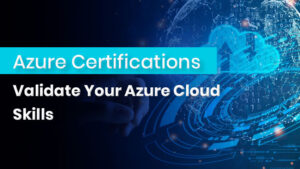
How to Harden Your Infrastructure Using CIS Benchmarks
How to Harden Your Infrastructure Using CIS Benchmarks Introduction As more organizations go faster with their digital transformation, the security and resilience of IT infrastructure
Limited-Time Offer! Get an exclusive 40% OFF on IPSpecialist Premium Monthly & Annual Plans. Use Promo Code: UPSKILLNOW at checkout.

How to Harden Your Infrastructure Using CIS Benchmarks Introduction As more organizations go faster with their digital transformation, the security and resilience of IT infrastructure

Azure Certifications – Validate Your Azure Cloud Skills Introduction Cloud computing has transformed the business landscape, providing scalability, flexibility, and affordability in a way

Top Cyber Security Trends: What Every Organization Must Know Introduction In an era marked by digital transformation, remote workforces, and rapidly evolving threat landscapes,
Table of Contents
Kubernetes, a container orchestration platform, has become dominant in modern IT operations. This blog post explores the reasons behind Kubernetes’ surge in popularity and dives into Amazon’s significant investment in Amazon Elastic Kubernetes Service (Amazon EKS). We’ll examine the benefits organizations gain from using Kubernetes and the various use cases for Amazon EKS. Finally, we’ll explore AWS’s goals for Kubernetes’ future and how they support the technology.
Dive deeper into the world of cloud technology and IT mastery with IPSpecialist! Get the best course by accessing comprehensive IT certification training and resources. From AWS expertise to mastering Microsoft, Cisco, DevOps, and more, IPSpecialist offers diverse Courses, study guides, and practice exams tailored to amplify your skills. Elevate your career in the dynamic realm of IT—explore their offerings now!
Amazon Elastic Kubernetes Service (Amazon EKS) is a managed service that simplifies running containerized applications on Amazon Web Services (AWS). EKS eliminates the need for manual Kubernetes setup and management, allowing you to focus on building and deploying your applications. It offers a highly available, scalable, and secure platform for container orchestration, integrating seamlessly with other AWS services for networking, security, and monitoring.
Customers are leveraging EKS for a variety of purposes; activities range from the migration of legacy .NET and Java applications to the cloud, the execution of data processing tasks, the construction of real-time backends, and the development of web frontends.
Recently, a substantial emergence of machine learning and AI has been observed as a major utilization for EKS and Kubernetes, covering diverse areas such as generative AI and robotics. A profound interest lies in autonomous vehicles, which are exceptionally captivating. Notably, substantial autonomous vehicle training activities are currently taking place in EKS. Witnessing companies actively engaged in developing future technologies with tools like machine learning, kube ray, Spark, and kube flow running on EKS is a remarkable and exciting aspect of the current landscape.
In the exploration, the analysis extends to the infrastructure, observing the intricate layers where Kubernetes plays a pivotal role by orchestrating across diverse infrastructure elements, seamlessly knitting them together. Customers actively contribute by layering deployment, observability, governance, traffic controls, and security controls on top of Kubernetes.
| 2018 | 2019 | 2020 | 2021 | 2022 | 2023 |
| EKS Generally Available | ISO, PCI, and SOC Compliance | Price reduced to $0.10 per hour | OIDC access authentication | IPv6 clusters available | Expansion to 32 AWS regions |
| Managed Cluster Version Updates | Expansion to 15 AWS regions | Secrets Encryption | Karpenter project | PrivateLink support | Kubernetes Network Policy enforcement |
| GPU Support | CSI drivers for EBS, EFS, FSx for Lustre | SLA raised to 99.95% | Cluster creation reduced by 40% | Local clusters on Outposts | Extended version support |
| HIPAA eligible | Pod security policies | EKS CIS Benchmark | Control plane scaling | Trainium instances | Version launch acceleration |
| Managed Node Groups | ACK Project | EKS Anywhere GA | Add-ons from AWS marketplace | Pod Identity | |
| EKS Fargate | Load balancer controller | EKS Connector | Nitro enclaves | S3 Mountpoints CSI Driver | |
| EKS on AWS Outposts | EKS on AWS Local zones | FedRamp High Compliance | Launch time reductions | ||
| K8s Resources in EKS console | EFA, P4d instance support | ||||
| EKS Add-ons |
Amazon EKS stands out as a pivotal element in the management bucket, engaged in comprehensive support for Kubernetes within the AWS ecosystem. Serving as a cornerstone in AWS’s commitment to Kubernetes, EKS exemplifies the dedication to providing customers with a robust and efficient Kubernetes management solution. Beyond EKS, AWS offers diverse approaches, including developing a Kubernetes distribution, integrating numerous open-source projects, facilitating connectivity between Kubernetes and AWS components, and active participation in upstream development.
The AWS team extends its commitment to security by contributing to the security council of the Cloud Native Computing Foundation (CNCF) and the Kubernetes project, ensuring robust safety measures. Furthermore, AWS plays a vital role by offering direct sponsorship providing financial support to community projects that contribute to lowering costs and enhancing the availability of shared resources for everyone involved.
The future of Amazon EKS lies in its ability to embrace cutting-edge advancements. Here are a few potential avenues:
Amazon EKS is finding its way into various industries. We can expect to see industry-specific solutions pre-packaged with EKS, offering pre-configured environments and integrations tailored to specific use cases like machine learning, high-performance computing, and media & entertainment.
The future of Kubernetes is bright, and Amazon EKS is at the forefront of innovation. AWS is committed to providing its customers with a robust, efficient, and secure Kubernetes experience. With a focus on removing undifferentiated heavy lifting, simplifying operations, and perpetuating open-source standards, AWS is ensuring that Kubernetes remains a powerful tool for driving business value.
There are several advantages to using Amazon EKS over managing Kubernetes yourself. With EKS, AWS handles the heavy lifting of managing the Kubernetes control plane, allowing you to focus on deploying and managing your applications. EKS also simplifies scaling your Kubernetes cluster and ensures high availability. EKS integrates seamlessly with other AWS services, making it easier to build and deploy cloud-native applications.
Amazon EKS offers several security features to protect your containerized applications. EKS integrates with AWS IAM for access control, allowing you to define granular permissions for who can access your Kubernetes cluster and what they can do. Additionally, EKS supports encryption of container images and secrets at rest and in transit. Finally, AWS offers security best practices and compliance certifications for running Kubernetes on EKS.
Getting started with Amazon EKS is easy. AWS provides a variety of resources to help you learn about EKS, including documentation, tutorials, and workshops. You can also sign up for a free tier account to experiment with EKS before committing to a paid plan. There are also a number of managed service providers (MSPs) that offer support for Amazon EKS, which can be helpful for organizations that don’t have the in-house expertise to manage Kubernetes clusters themselves.
© 2025 All rights reserved | Privacy Policy | Terms and Conditions | Sitemap | Cookie Policy

